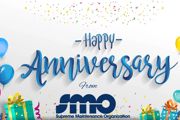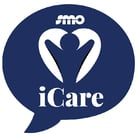

In our last post Benefits of Effective Entry Matting, we discussed the various benefits that can be achieved via installation of an entry matting system. In this post we will provide some insight on how to maximize those benefits by understanding the types of matting systems currently available as well as proper installation guidelines.
Entry Matting Products
There are several types of entry matting products on the market today. Understanding the basic product types and their respective strengths and weaknesses is essential when selecting the most suitable product for your facility. Consideration should be given to the following:
Backing Material
- Vinyl Backed Matting: These types of entry matting systems are typically near the bottom of the price scale. They are also less durable and more easily damaged than other matting types. The slick vinyl backing makes this type of matting more prone to sliding and displacement. Vinyl backed matting is generally more suitable for areas with low foot traffic.
- Rubber Backed Matting: A rubber backing provides better grip against the underlying surface. Rubber backed mats are also significantly more durable than vinyl mats. Rubber matting is more expensive but the price differential can be offset by its superior durability.
Surface Type
- Flat or Two-Level: In a two-level matting system the upper level provides the shoe cleaning mechanism while the lower level serves as the repository for the removed dirt and contaminates. The fact that the dirt is collected within the lower level means that it will not be re-attached to subsequent foot traffic. Flat matting is less expensive than two-level matting and has quicker drying properties, but is generally not as effective as two-level matting.
Surface Material
- Nylon Fiber: Nylon provides an extremely durable, and fast-drying, matting surface. Nylon mats will perform well within high-traffic areas. The downside is that nylon is not as absorbent as cotton and may require more matting surface area to perform well.
- Cotton Fiber: Cotton has excellent absorption properties. Cotton fiber matting will fully absorb dirt and fine contaminates from the soles of shoes. However, cotton matting will not dry as fast as nylon matting and is, therefore, typically more suited for lower-traffic applications.
Installation
How much entry matting is required for your facility? That depends on a few factors such as: type of foot traffic, volume of traffic, type of external environment, etc. The Entrance Flooring System Association (EFSA) characterizes floor traffic and recommended matting length as follows.
Low traffic = < 80 people per hour. 11 feet of matting recommended.
Medium traffic = up to 400 people per hour. 20 feet of matting recommended.
High traffic = > 800 people per hour. 30 feet of matting recommended.
It is also recommended that the full width of the facility entrance(s) be covered by the matting.
Careful consideration of all these factors will allow you to select, and install, the most efficient and cost-effective entry matting system for your facility.
What type of entry matting product do you currently have for your facility? Let us know in the section for comments below.
And if you need a customized, cost-effective Service Solution for your business, let SMO help. Request a Customized Service Solution today.



.jpg?width=220&height=135&name=Blog%20Listing%20Image%20(13).jpg)
-1.jpg?width=220&height=135&name=Blog%20Listing%20Image%20(5)-1.jpg)

.png?width=180&height=138&name=Untitled%20design%20(25).png)


